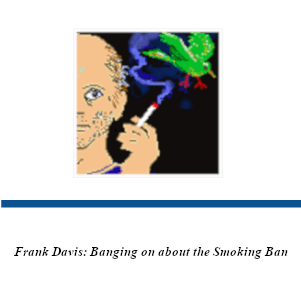

FULL CLAIM: The black lung lie: The lie hinges on first asserting that smoking causes emphysema (it may do, or it may not), and secondly asserting that emphysema turns lungs grey-black (it probably does), and then finally dropping the connecting middle term of ’emphysema’, and asserting that smoking turns lungs grey-black. Or it’s just calling emphysematous lungs ‘smokers’ lungs’.
REVIEW
A post titled “The black lung lie” makes the claim that smoking does not necessarily cause lungs to discolor or turn black. Although the original post was published in 2012, it began trending on Facebook in November 2019, receiving more than 10,000 interactions.
In support of this claim, the author digs up quotes from physicians in the 1960s and 70s provided to U.S. tobacco industry giant R.J. Reynolds, which the company used in its argument at the time that smoking does not cause lung cancer. Testimonials from the physicians included: “Smoking does not discolor the lung” and “it is not possible grossly or microscopically, or in any other way known to me, to distinguish between the lung of a smoker or a nonsmoker.”
While it is well known that “not every smoker develops chronic lung disease and that lung pathology differs markedly among smokers”, as the authors of one study wrote[1], this claim ignores the well-established links between smoking and lung disease[2], including cancer and chronic obstructive pulmonary disease (COPD)[3][4][5], reduced lung function[6][7], heart disease, and an increased risk of stroke.
Lung disease such as emphysema can indeed cause black discoloration in the lungs[8], but not all smokers will develop emphysema. The author of the claim contends, therefore, that the association between “black lungs” and smokers is a fallacy. However, this argument does nothing to support his claim and instead simply distracts from the very real dangers of tobacco smoking. Smoking causes about 90% of all lung cancer deaths and about 80% of all deaths from COPD in the U.S., according to the Centers for Disease Control and Prevention.
REFERENCES
- 1 – Morse and Rosas. (2014) Tobacco smoke-induced lung fibrosis and emphysema. Annual Review of Physiology.
- 2 – Franks and Galvin. (2015) Smoking-related “interstitial” lung disease. Archives of Pathology & Laboratory Medicine.
- 3 – Golpe et al. (2014) Distribution of clinical phenotypes in patients with chronic obstructive pulmonary disease caused by biomass and tobacco smoke. Archivos de Bronconeumología.
- 4 – Hogg and Timens. (2009) The pathology of chronic obstructive pulmonary disease. Annual Review of Pathology.
- 5 – Guiedem et al. (2018) Chronic Obstructive Pulmonary Disease (COPD): Neutrophils, Macrophages and Lymphocytes in Patients With Anterior Tuberculosis Compared to Tobacco Related COPD. BMC Research Notes.
- 6 – Woodruff et al. (2016) Clinical significance of symptoms in smokers with preserved pulmonary function. The New England Journal of Medicine.
- 7 – Oelsner et al. (2019) Lung function decline in former smokers and low-intensity current smokers: a secondary data analysis of the NHLBI Pooled Cohorts Study. The Lancet Respiratory Medicine.
- 8 – Hall. (2005) Will nicotine genetics and a nicotine vaccine prevent cigarette smoking and smoking-related diseases? PLoS Medicine.


